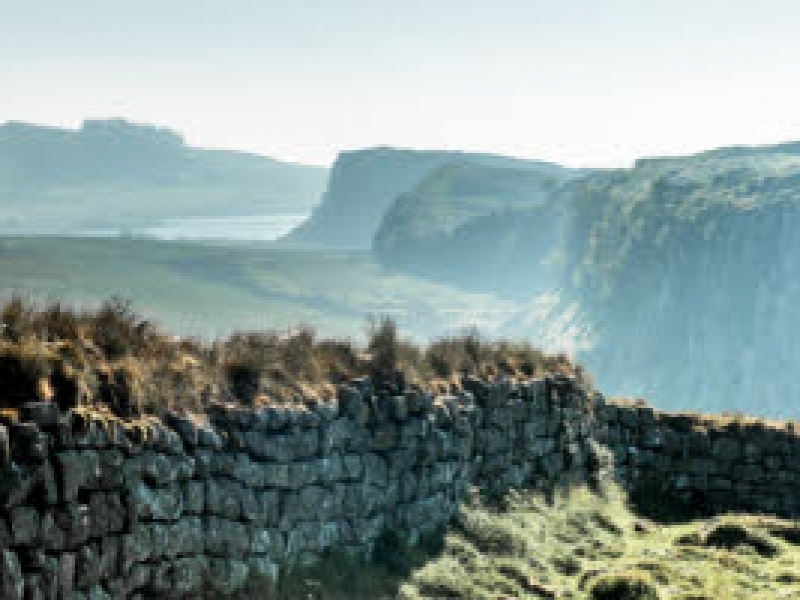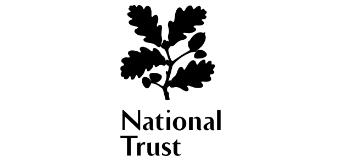Paul Farley talks about Hadrian's Wall
Added: 25 October 2019
Here, along the highest stretches of Hadrian’s Wall, near the settlement of Once Brewed, under Steel Crag and lying on the Great Whin Sill (I just like saying the names), we find ourselves in a wide open, windswept, unpopulated, mineral landscape, about as remote a place as Places of Poetry has visited this summer. A sycamore tree grows in a gap, iconic enough to find itself on a local beer label (more on this in a minute). It’s the most northerly point in the project, and also as far north as Michael Drayton ever got writing his Poly-Olbion. Drayton’s map is also ours—Places of Poetry covers the same ground as Poly-Olbion—but although a further Scottish volume was planned, Drayton never got round to it, or was simply too knackered after his Herculean task, and decided to call it a day. We’ll never know.
We do know that William Camden—whose great survey of Britain and Ireland, Britannia, was an important source and inspiration for Drayton—didn’t fancy visiting this stretch of the Wall at the end of the sixteenth century because of the ‘ranke robbers thereabouts’. This was the land of the Reivers, the Busy Gap Rogues, bandit country, pillaged, fought over and debateable. It’s likely Drayton gave it a miss, too. He gets very inventive: his ‘Pictswall’ in Poly-Olbion brags about brass pipes running its length, so a whisper could travel from the Solway to Newcastle, a kind of Roman information superhighway. Drayton likes making things speak.
We’re in Northumberland to meet up with our resident poet at Hadrian’s Wall, Kayo Chingonyi, who is based at the Housesteads Fort site run by our partners at the National Trust. We’d hoped he’d be attracted to this gig; a couple of poems in his wonderful first collection, Kumukanda, hinted at a familiarity with the north east, and we were delighted when he agreed. The poem Kayo ends up writing for the project, ‘A Northerly Aspect’, navigates imaginative distances between north and south, and captures how we carry different places around, how we can tune into a place, the landscape here ‘a long conversation’ of human activity and absences. The people come and wander among the stones. Kayo runs workshops with the Conversation Group from Newcastle on his first day, then a series of short workshops for members of the public on his second day. A film crew from BBC Countryfile frame us and workshop participants among the ruins. And then it’s time to go to the pub.
The pub seems more vital in an out-of-the-way place, a point (or pint) of focus for shelter and gathering. In Once Brewed it’s called the Twice Brewed, and is actually an eco-brewery, drawing water from its own well. Attempts at charm and blagging pay off when we’re allowed an impromptu behind-the-scenes tour by a kind member of staff. After a couple of glasses of Sycamore Gap, we head back to our digs in an August drizzle. It feels like it’s rained all summer, everywhere we’ve been, and I imagine it happening in the past. The rain that ignores all human borders. The rain that soaked the Armstrongs and Nixons on their cattle raids. The rain that fell on centurions’ tunics and gave the homesick soldier a cold in his nose, in Auden’s famous blues. The rain that fell ten thousand years ago and rises again with the bubbles in a pint of real ale.
A Northerly Aspect
we flew south —
and, though
wandsworth
alleyways
banished howays
from my diction,
still my heart
has a northerly aspect
(quite apart
from this voice
that divides opinion
when I carry it
far from home).
How to gesture
towards tall ships
grace darling
bottles of pop
bobby shafto
the part of me
lost to the realm
of ledgers
of legend
the part
that ascribes
to darkness
light
here where the landscape
is a long conversation
and the breeze
a list of the missing
and of the dead
read from the surface
of these stones
that do not forget.
Search Poems
























